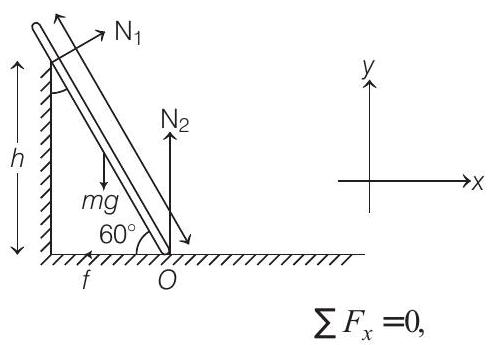Laws of Motion 3 Question 5
5. A uniform wooden stick of mass
(a)
(b)
(c)
(d)
(2016 Adv.)
Show Answer
Answer:
Correct Answer: 5. (d)
Solution:

Also, given
Solving Eqs. (i), (ii), (iii) and (iv) we have






